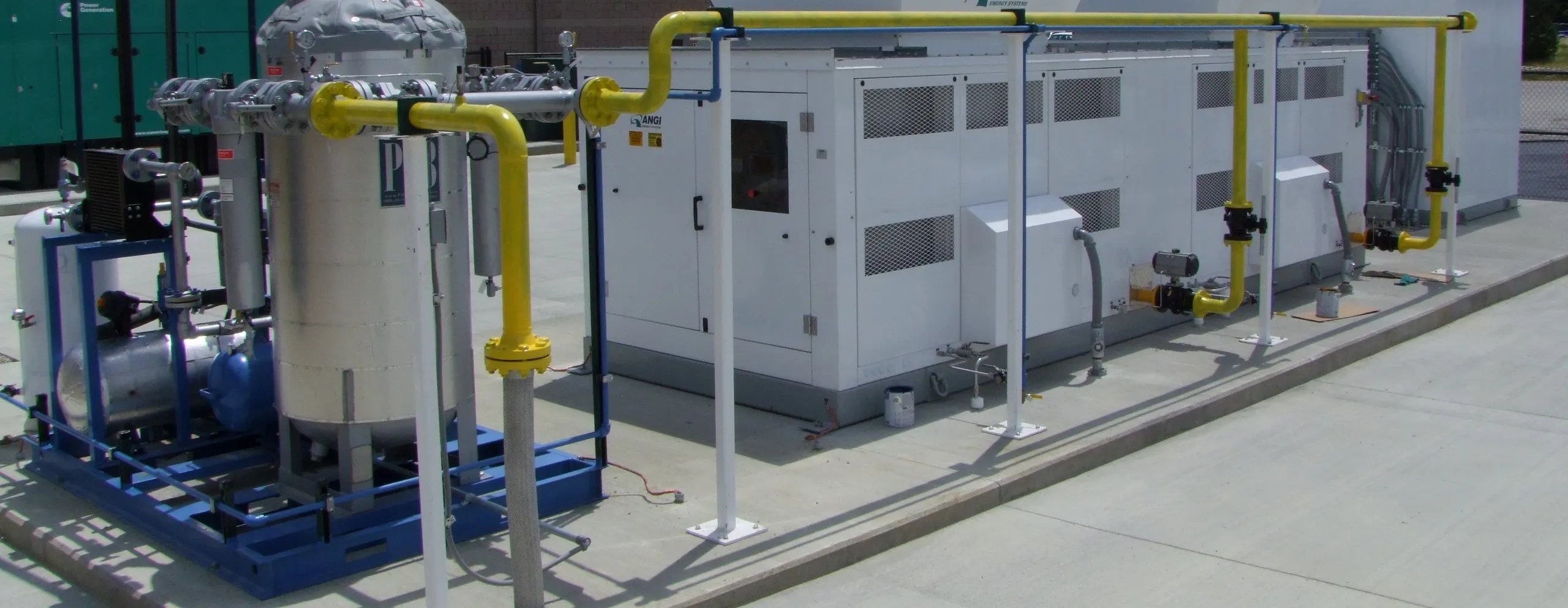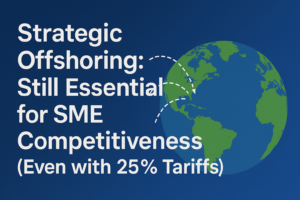
Introduction
The North American natural gas compressor manufacturing industry is poised to encounter significant cost-related challenges in 2025. Key factors influencing these challenges include market dynamics, supply chain volatility, fluctuating material costs, labor shortages, and regulatory compliance. Given the high cost of domestic production, strategic offshoring of subassemblies—especially in plastics, electrical components, and metal parts—can provide manufacturers with a competitive edge while maintaining quality and efficiency.
Market Dynamics and Cost Challenges
The U.S. air and gas compressor manufacturing sector is projected to reach a market size of $8.7 billion in 2025. However, the industry has experienced a decline at a compound annual growth rate (CAGR) of 6.8% between 2019 and 2024, with the number of businesses decreasing by 2.1% during the same period. This contraction suggests heightened competition and potential market saturation, leading to increased pressure on manufacturers to manage production costs effectively (IBISWorld).
Additionally, the global liquefied natural gas (LNG) compressor market is expected to grow from $4.25 billion in 2024 to $4.48 billion in 2025, at a CAGR of 5.5%. This growth is driven by rising LNG demand, investments in infrastructure, and a shift towards cleaner energy sources. To capitalize on these opportunities, North American manufacturers must enhance operational efficiency and reduce costs to remain competitive (The Business Research Company).
Supply Chain Volatility and Rising Material Costs
Supply chain disruptions have been a persistent issue in the manufacturing industry, exacerbated by geopolitical tensions, trade restrictions, and shipping delays. The ongoing effects of the COVID-19 pandemic and recent global conflicts have contributed to material shortages and higher transportation costs, leading to unpredictable lead times for essential compressor components.
Material costs have also been rising, particularly for metals such as steel, aluminum, and copper, which are critical to the production of compressors. According to industry reports, global steel prices have experienced volatility, with some forecasts predicting continued price hikes due to supply chain constraints and increased demand for infrastructure projects (World Steel Association).
In response, manufacturers must find alternative sourcing strategies to mitigate cost pressures. Offshoring specific subassemblies to cost-effective regions can alleviate material expenses while ensuring supply chain stability through diversified sourcing.
Skilled Labor Shortages and Workforce Challenges
The natural gas compressor manufacturing industry in North America is facing a shortage of skilled labor, particularly in engineering, welding, and precision machining. Many experienced workers are retiring, and there is an insufficient pipeline of younger workers with the necessary technical skills to replace them. This labor gap is causing wage inflation, further driving up production costs.
To address these labor shortages, manufacturers can leverage offshore partners with established expertise in compressor subassembly production. Countries with robust manufacturing sectors, such as Vietnam, Mexico, and India, offer a skilled workforce at a fraction of the cost of domestic labor. By offshoring specific components while keeping final assembly and testing in North America, manufacturers can balance cost savings with quality control and compliance.
Strategic Offshoring of Subassemblies
To address these cost challenges, manufacturers can consider offshoring the production of specific subassemblies, such as those involving plastic, electrical, or metal components. Offshoring offers several potential benefits:
- Cost Reduction: Manufacturing in countries with lower labor and material costs can lead to significant savings, enabling companies to allocate resources more efficiently.
- Access to Specialized Expertise: Certain regions possess specialized skills and technologies that enhance the quality and efficiency of subassembly production, reducing defect rates and improving reliability.
- Scalability and Flexibility: Offshore facilities may offer greater flexibility to scale production up or down in response to market demand, without the constraints of domestic labor markets or regulatory environments.
- Supply Chain Resilience: Diversifying suppliers across multiple regions can reduce dependency on a single market, mitigating risks associated with geopolitical instability and trade restrictions.
- Improved Focus on Core Operations: By outsourcing non-core subassemblies, manufacturers can focus on high-value activities such as design, assembly, and quality assurance.
Risks and Considerations in Offshoring
While offshoring presents numerous advantages, it also introduces challenges that manufacturers must carefully navigate:
- Quality Control: Ensuring consistent quality across offshore suppliers requires stringent monitoring and robust supplier relationships.
- Logistics and Lead Times: Longer shipping distances can result in extended lead times, necessitating careful inventory and supply chain management.
- Regulatory Compliance: Manufacturers must ensure that offshore partners adhere to North American regulatory standards, particularly regarding environmental and safety requirements.
- Geopolitical Risks: Trade restrictions, tariffs, and political instability in certain regions can impact the reliability of offshore production.
To mitigate these risks, manufacturers should establish clear contractual agreements, conduct regular supplier audits, and implement a dual-sourcing strategy to enhance supply chain resilience.
Conclusion
In summary, the North American natural gas compressor manufacturing industry faces significant cost challenges in 2025 due to market dynamics, supply chain volatility, rising material costs, and skilled labor shortages. Strategic offshoring of plastic, electrical, or metal subassemblies can serve as an effective strategy to manage costs while maintaining competitiveness. Manufacturers must carefully weigh the benefits and risks associated with offshoring, implementing robust quality control measures and diversified sourcing strategies to ensure operational efficiency and long-term sustainability.
By leveraging offshore manufacturing in a strategic and controlled manner, North American compressor manufacturers can navigate cost pressures while positioning themselves for growth in a highly competitive market.
#NaturalGas #CompressorManufacturing #ManufacturingCosts #SupplyChain #Offshoring #GasCompressors #MetalFabrication #PlasticsManufacturing #ElectricalComponents #EnergyIndustry #ManufacturingTrends #SupplyChainManagement #Manufacturing2025 #CostReduction #LaborShortages #GlobalManufacturing #NorthAmericanIndustry #IndustrialManufacturing #EnergyInfrastructure #Automation #ManufacturingEfficiency #Reshoring #StrategicSourcing #Engineering #MarketTrends
#QualityControl #VietnamManufacturing #Manufacturing2024 #OffshoreManufacturing #REDUxEngineering #QualityAssurance #ManufacturingTips #TechInManufacturing #AuditProcess #InspectionProcess






